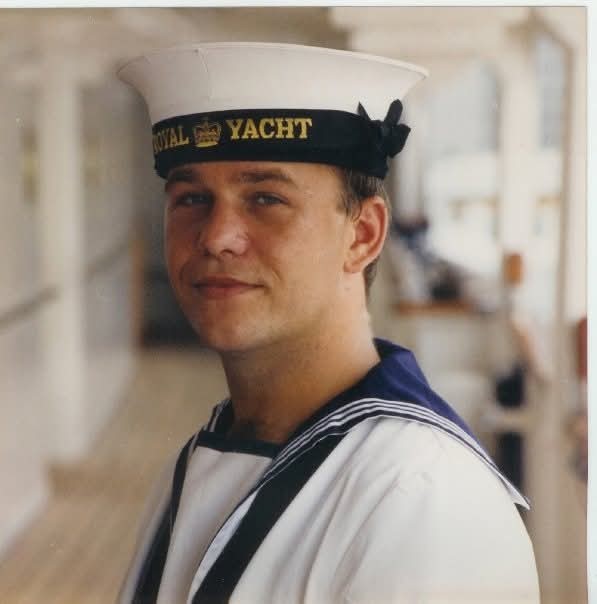 Stuart Ardern was one of the Royal Yachtsmen onboard the Royal Yacht Britannia until the vessel was decommissioned in 1997. Searching for renewed job security and a chance to return to public service, he joined EMAS as a 999 call taker (now called an Emergency Medical Advisor).
Stuart Ardern was one of the Royal Yachtsmen onboard the Royal Yacht Britannia until the vessel was decommissioned in 1997. Searching for renewed job security and a chance to return to public service, he joined EMAS as a 999 call taker (now called an Emergency Medical Advisor).
Stuart has spent twenty-one years working in EMAS’s Emergency Operations Centre. He’s at the heart of the service, arranging emergency responses for people who need life-saving help.
He has shared his Resettlement story with Civvy Street Magazine.
Stuart's Navy career
"When I joined the Royal Navy, I saw it as an opportunity to prove myself.
I trained as a Naval Radar Operative and, in 1993, I was appointed Quartermaster of Her Majesty’s Yacht Britannia. I’d made it to the top of my game, sailing with the British Monarchy and dignitaries from across the world.
I spent summers sailing the Western Isles of Scotland with HM Queen Elizabeth II, and the rest of the year sailing anywhere that her royal duties took us. The highlight of my career came in 1997 – on 1 July at midnight, I saluted aboard the then-Prince of Wales (now HM King Charles III) at the moment that the United Kingdom returned Hong Kong to Chinese sovereignty. That was one of my proudest moments.
Soon afterwards, the Royal Yacht Britannia was decommissioned. I felt I’d reached my peak in the Navy and that I’d truly proven myself, so I chose to retire."
Resettlement
"Back then, there wasn’t the resettlement support that exists now. I didn’t really have a plan for what I wanted to do. My first civilian job was in sales for a technology company but I quickly realised it wasn’t for me. I gave it a year, and then I decided to return to public service."
Returning to service
"I joined EMAS’s Emergency Operations Centre as a 999 call taker (now called an Emergency Medical Advisor). Over my time, I must have answered thousands of 999 calls from people needing emergency help.
Twenty-one years later, I’m still part of the team, now a Dispatch Officer. When someone calls 999, my colleagues and I are working behind the scenes to allocate resources to respond – we could be sending multiple resources to an incident with lots of casualties, or a fast response vehicle to an elderly person who is having difficulty breathing. We’re one of the links in the chain of people who work together to save lives. It’s my job to make sure help reaches the patient as quickly as possible.
It keeps you on your toes – every day, and every incident, is different. It has given me the security that I wanted, and chances to prove myself every day. I’d recommend the job to anyone.
I’ve learned that you don’t need to give up your sense of purpose when you leave the forces – joining the ambulance service (like joining any uniformed service) is like jumping from one foot to the other. There’s a place here for everyone who wants to serve.”
Read Stuart's article
- Civvy Street Magazine (June/July 2025; p. 15)
Join Team EMAS
EMAS is a Veteran Aware organisation and accredited with a Gold Award in the Ministry of Defence Employer Recognition Scheme.
We offer a guaranteed interview scheme to applicants with a military service history who:
- meet the criteria outlined in the job specification
- and are successful at the initial screening stage.